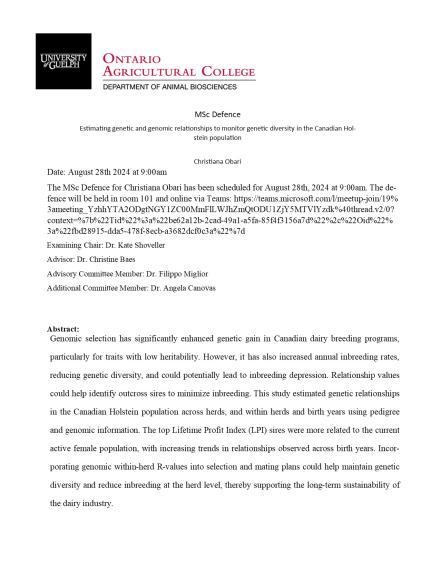Christiana's MSc Defence
Date and Time
Location
Room 101 and Teams: https://teams.microsoft.com/l/meetup-join/19%3ameeting_YzhhYTA2ODgtNGY1ZC00MmFlLWJhZmQtODU1ZjY5MTVlYzdk%40thread.v2/0?context=%7b%22Tid%22%3a%22be62a12b-2cad-49a1-a5fa-85f4f3156a7d%22%2c%22Oid%22%3a%22fbd28915-dda5-478f-8ecb-a3682dcf0c3a%22%7d

Details
Estimating genetic and genomic relationships to monitor genetic diversity in the Canadian Hol-stein population
Genomic selection has significantly enhanced genetic gain in Canadian dairy breeding programs, particularly for traits with low heritability. However, it has also increased annual inbreeding rates, reducing genetic diversity, and could potentially lead to inbreeding depression. Relationship values could help identify outcross sires to minimize inbreeding. This study estimated genetic relationships in the Canadian Holstein population across herds, and within herds and birth years using pedigree and genomic information. The top Lifetime Profit Index (LPI) sires were more related to the current active female population, with increasing trends in relationships observed across birth years. Incor-porating genomic within-herd R-values into selection and mating plans could help maintain genetic diversity and reduce inbreeding at the herd level, thereby supporting the long-term sustainability of the dairy industry.